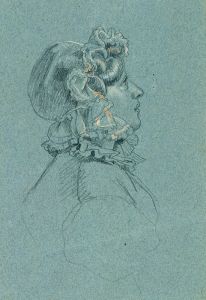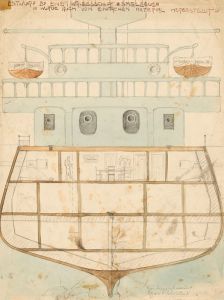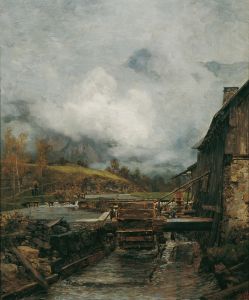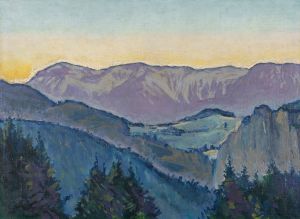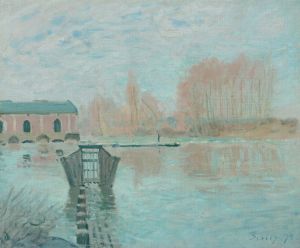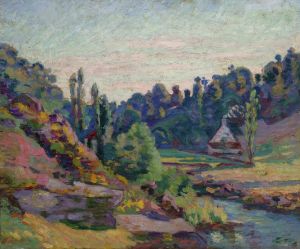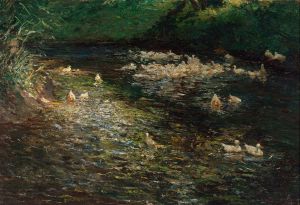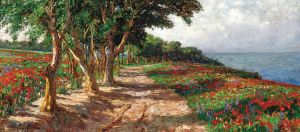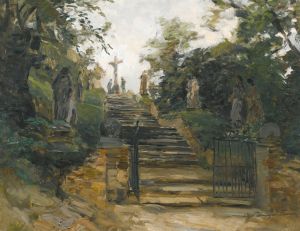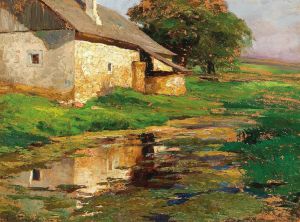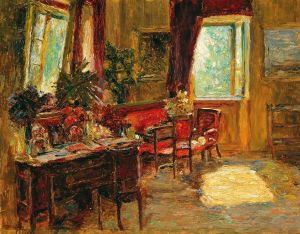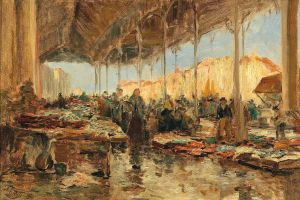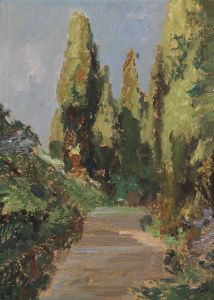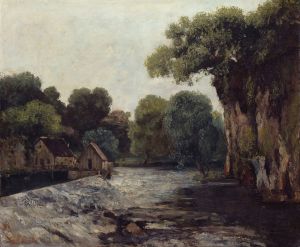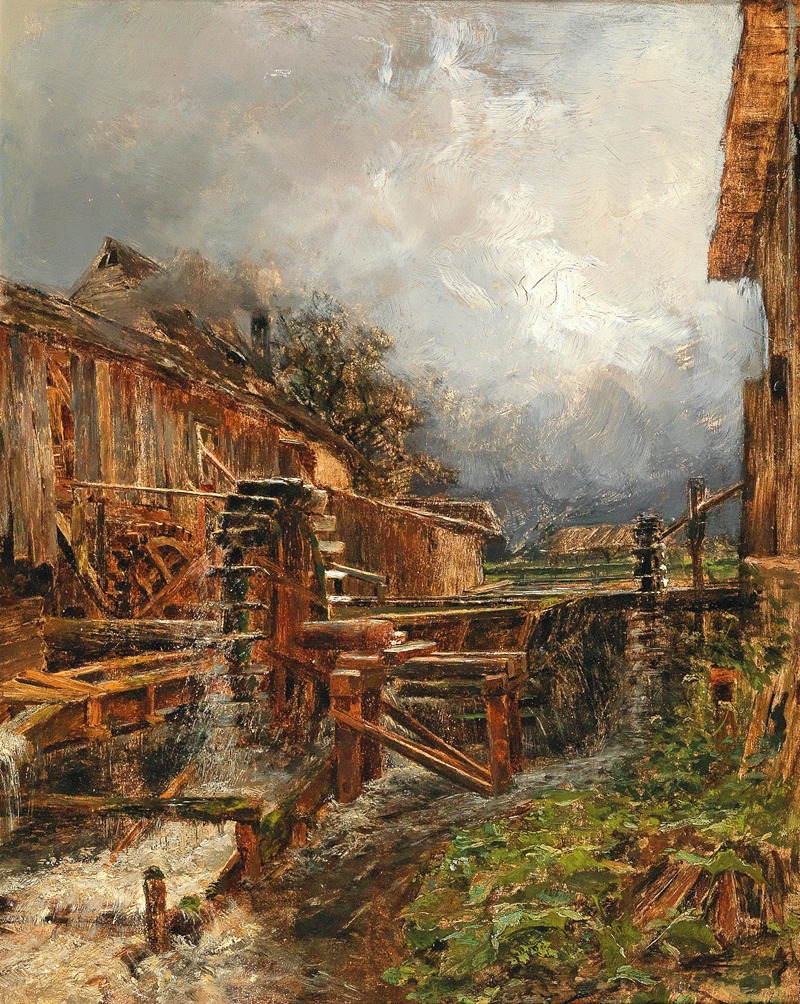
Mill at Goisern
A hand-painted replica of Olga Wisinger-Florian’s masterpiece Mill at Goisern, meticulously crafted by professional artists to capture the true essence of the original. Each piece is created with museum-quality canvas and rare mineral pigments, carefully painted by experienced artists with delicate brushstrokes and rich, layered colors to perfectly recreate the texture of the original artwork. Unlike machine-printed reproductions, this hand-painted version brings the painting to life, infused with the artist’s emotions and skill in every stroke. Whether for personal collection or home decoration, it instantly elevates the artistic atmosphere of any space.
Olga Wisinger-Florian was an influential Austrian painter known for her contributions to the Impressionist movement, particularly within the context of Austrian art. Born on November 1, 1844, in Vienna, she initially pursued a career in music before turning her focus to painting in her thirties. Wisinger-Florian became one of the most prominent female artists of her time, celebrated for her landscapes and floral compositions.
"Mill at Goisern" is one of Wisinger-Florian's notable works, exemplifying her adept skill in capturing the natural beauty of the Austrian landscape. The painting depicts a mill located in Goisern, a picturesque region in Austria known for its scenic views and traditional architecture. This work is characteristic of Wisinger-Florian's style, which often features vibrant colors and dynamic brushwork, reflecting the influence of Impressionism while maintaining a distinct personal touch.
Wisinger-Florian's approach to painting was deeply rooted in her appreciation for nature, and she often sought to convey the interplay of light and shadow in her works. "Mill at Goisern" is no exception, as it showcases her ability to render the subtle nuances of natural light and its effects on the landscape. The painting likely captures a specific moment in time, with the mill set against a backdrop of lush greenery and perhaps a flowing stream, elements that are common in her landscape compositions.
Throughout her career, Wisinger-Florian was associated with the Austrian avant-garde and was a member of the Vienna Secession, a group of artists who sought to break away from traditional academic art. Her participation in this movement underscores her commitment to exploring new artistic expressions and her desire to push the boundaries of conventional art forms.
In addition to her artistic achievements, Wisinger-Florian was also an advocate for women's rights, particularly in the realm of art. She was a founding member of the Austrian Association of Women Artists, which aimed to provide female artists with greater opportunities and recognition in a male-dominated field. Her efforts in this area contributed to the gradual acceptance and appreciation of women artists in Austria and beyond.
"Mill at Goisern" remains a testament to Wisinger-Florian's talent and her ability to capture the essence of the Austrian landscape. While specific details about the painting's creation and current location may not be widely documented, its significance lies in its representation of Wisinger-Florian's artistic vision and her contribution to the Impressionist movement in Austria.
Olga Wisinger-Florian passed away on February 27, 1926, in Grafenegg, Austria. Her legacy endures through her paintings, which continue to be celebrated for their beauty and technical mastery. Her work, including "Mill at Goisern," serves as an inspiration for future generations of artists and art enthusiasts, highlighting the enduring impact of her contributions to the world of art.





